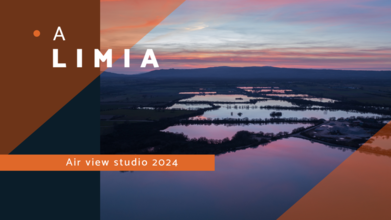
Interested In This Footage?
A Limia
- almost 2 years ago
- 243 VŪZ
8 




- 6
- Report
Although now there are only three left, in the past there were four towers that guarded the A Limia plain. Today the region lives peacefully, but centuries ago it was an object of desire and dispute due to its strategic nature. For this reason, precisely, these towers were built, although it is currently known that they were much more complex constructions. In fact, they are now called castles because that is what they were, despite the fact that today only those tower-shaped fortifications are preserved.
The one in the best condition is A Forxa, in the municipality of Porqueira. There is even a small ethnographic museum there. That of A Pena, in Xinzo de Limia, aspires to recover its splendor and has just been the subject of an intervention that served to recover the outer wall of the tower. These works, directed by Israel Picón, also served to bring to light constructions that confirm that in the past it was a castle "of great importance." After the intervention, the site has been enabled for visits.
Finally, consolidation tasks were also recently carried out in the Sandiás tower to prevent its walls, which were already in very poor condition, from collapsing. It must be remembered, in this sense, that Celme, in the municipality of Rairiz de Veiga, almost completely disappeared and only a granite ashlar cube remains visible.
They are, therefore, a key heritage resource from a tourist point of view for the region. In the past, these constructions surrounded the Antela lagoon, which could also be an attraction to attract visitors to the area, but which was drained in the sixties by the Francisco Franco regime.
Now what can be seen from there are the potato and cereal crops that fill the lands of A Limia, although areas of great natural wealth are preserved, with resources of interest for bird watching or hiking. The route through the area can be completed with a visit to the Trandeiras monastery, which is the subject of an ambitious rehabilitation project, or with a walk through the old town of Xinzo, the historic Abaixo neighborhood, with the rich heritage of its imposing church, but also with the gastronomic offer of its bars and restaurants, without forgetting the sand pits, an attractive ornithological destination, especially between mid-April and the end of June, with the arrival of summer species and spring migration. We should not miss the morning bird choruses in the sand pits, nor the comings and goings of dozens of birds of prey through the crop fields.
Up Next
Monte Louro

- Airviewstudio
- 534 VŪZ
7 - 6
- about 2 years ago
GALICIA NATURAL EP.2 | POZAS DE MELÓN | FERVENZA DE TOURÓN

- Airviewstudio
- 517 VŪZ
0 - 0
- about 2 years ago
Val do Navea

- Airviewstudio
- 506 VŪZ
8 - 8
- 8 months ago
ARAGON

- Airviewstudio
- 719 VŪZ
8 - 6
- about 1 year ago
Discovering Portugal 🇵🇹 | Guimaraês And Braga | Cinematic Drone 4K

- Airviewstudio
- 767 VŪZ
8 - 4
- about 2 years ago
Viana From Above

- Airviewstudio
- 694 VŪZ
6 - 3
- 4 months ago
MY YEAR 2023 | CASTILLA Y LEÓN

- Airviewstudio
- 928 VŪZ
4 - 2
- almost 2 years ago
A Trip Through Portugal | Porto & Vila Nova de Gaia

- Airviewstudio
- 661 VŪZ
5 - 4
- over 1 year ago
A TRIP THROUGH NATURE

- Airviewstudio
- 877 VŪZ
3 - 4
- about 2 years ago
My Year 2024

- Airviewstudio
- 565 VŪZ
1 - 1
- 12 months ago